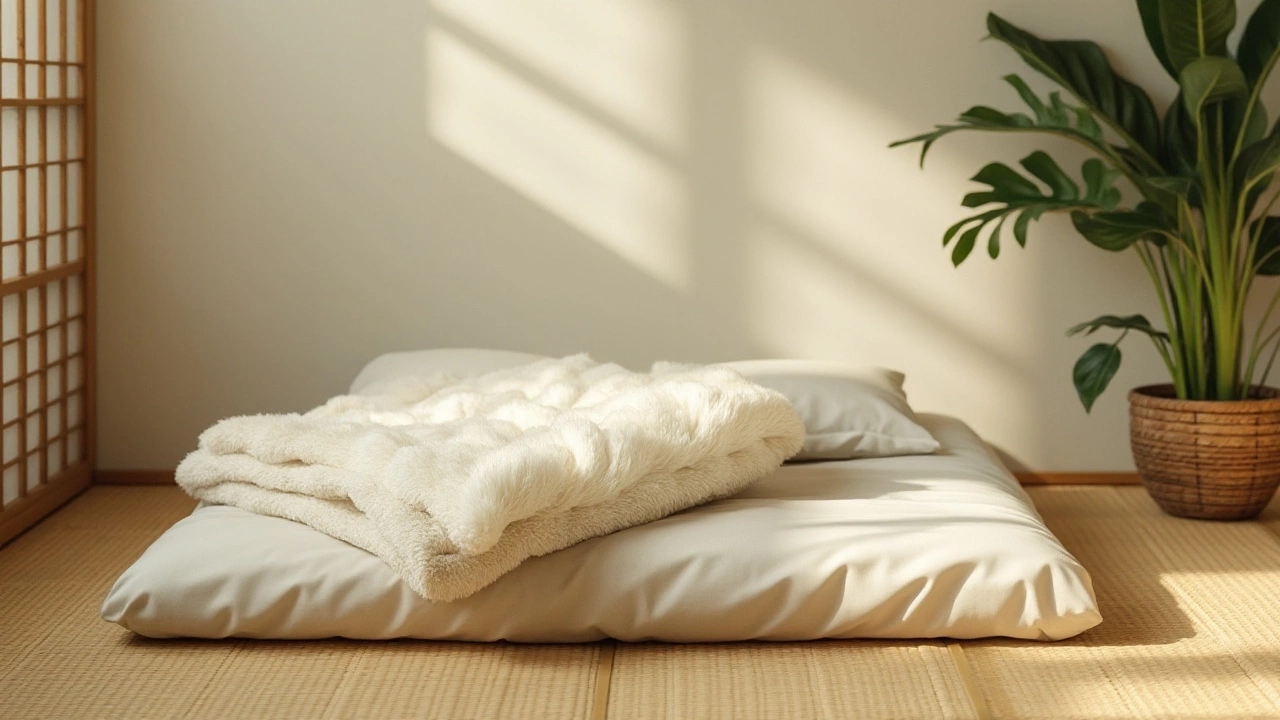Shikibuton – The Classic Japanese Floor Mattress
When working with Shikibuton, a thin, foldable mattress traditionally used on tatami flooring in Japan. Also known as Japanese futon, it provides a firm yet comfortable sleeping surface that encourages natural spine alignment. A shikibuton encompasses a cotton or blended fill, a breathable cotton cover, and a design that requires a tatami or similar firm base to work properly. This relationship forms the core of floor sleeping: the mattress connects with the floor, the floor supports the body, and the body benefits from reduced pressure points. In everyday terms, think of a shikibuton as the Japanese version of a mattress‑in‑a‑box, but one that folds, rolls, and stores away when you’re not using it.
Why Choose a Shikibuton?
People often wonder if a shikibuton can replace a modern Western‑style bed. The short answer: it can, and many find it better for health and space. Because the mattress is thin, your spine stays closer to the ground, which promotes a neutral posture and can lessen back pain. The organic cotton fill lets air flow, keeping the sleeping surface cooler than a foam topper that traps heat. Maintenance is simple – just air it out daily and flip it weekly – and because it folds up, storage is a breeze in a closet or under a sofa. When paired with Tatami, a straw‑filled mat that provides a firm, slightly cushioned platform, the shikibuton gains a stable base that prevents sinking and distributes weight evenly. Adding Bedding accessories, such as fitted sheets, pillowcases, and duvet covers lets you customize the look without sacrificing the mattress’s health benefits. If you live in a small apartment, the shikibuton frees up floor space during the day, turning a bedroom into a living area without the bulk of a traditional frame. And for those who love a minimalist aesthetic, the clean lines and natural fabrics fit right in.
Beyond comfort, the shikibuton supports a sustainable lifestyle. The cotton or wool fill is often sourced locally, reducing the carbon footprint compared to synthetic foams. When the mattress reaches the end of its life, many manufacturers accept it for recycling or composting, unlike a box spring that ends up in landfill. The ability to store the mattress flat means you’re not committing to a permanent piece of furniture – you can move it, sell it, or donate it easily. All these factors—health, space efficiency, simplicity, and eco‑friendliness—make the shikibuton a compelling alternative for anyone looking to improve sleep quality without the hassle of a heavy bed frame. Below you’ll find a curated selection of articles that dive deeper into choosing the right shikibuton, caring for it, and integrating it into modern homes.
Understanding the Differences Between Shikibuton and Kakebuton for Sofa Beds
Japanese bedding has piqued the interest of many due to its minimalistic design and comfort. Shikibuton and Kakebuton are two essential components often confused for one another. Shikibuton, a type of mattress, and Kakebuton, resembling a comforter, serve different purposes. This article unravels their distinct features and offers insights into their use and benefits.
full article




